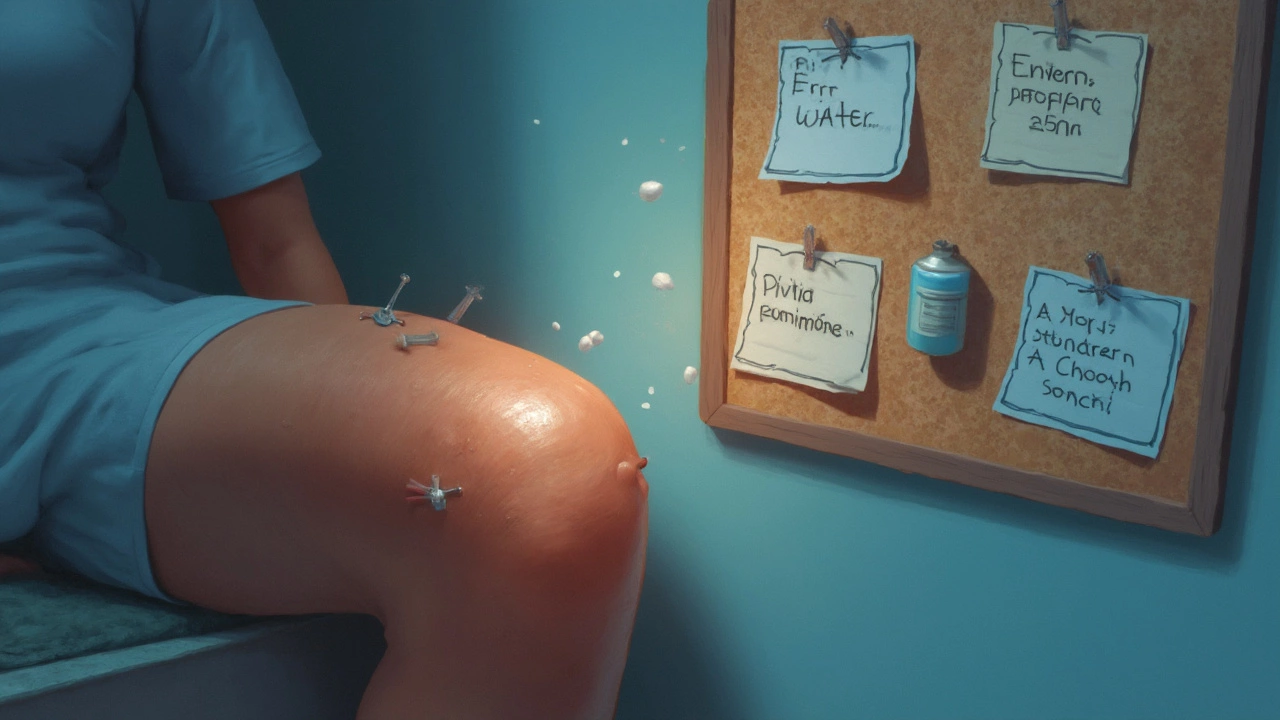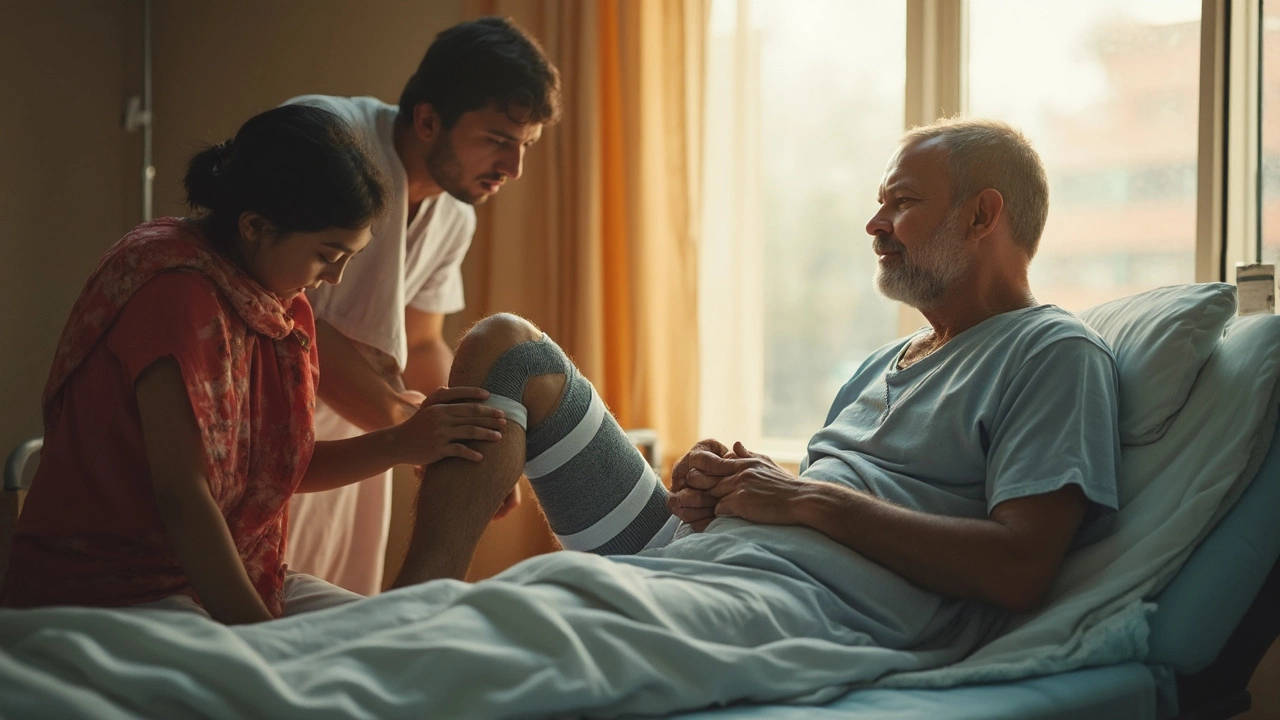If you ever wondered whether knee replacement surgery hurts, spoiler—you’re not alone and you’re not imagining things. After all, the whole point of getting your knee swapped out is to get rid of the pain, right? But here’s the catch: before you’re skipping up stairs or playing with your grandkids, you’re going to face some discomfort. It’s a wild ride, especially during certain pockets of recovery when pain hits like clockwork. So, when does it hurt the most? And what’s actually happening inside your knee while you’re gritting your teeth? Let’s unpack it, no filters, just facts and real talk.
When Is the Most Painful Time After Knee Replacement?
If you’re searching for a single worst day, you won’t find it in anyone’s discharge papers, but pretty much every surgeon will agree—the first 48-72 hours after surgery are usually brutal. Why? Well, your body is in shock. Somebody just swapped out a core piece of your skeleton! Right after the operation, the surgical team tries to get you ahead of the pain curve with strong meds. But as those hospital-grade painkillers wear off, especially if you’re back home and managing with milder tablets, that’s when reality bites.
Here’s a breakdown of what happens in that initial window:
- Major swelling: Your knee swells up like a cricket ball because it's trying to heal, fight off invaders, and deal with all that fresh trauma.
- Stiffness starts: Joints hate being messed with, so they immediately get stiff and stubborn. Bending even a little feels like torture.
- Surgical pain: Remember, there’s not just a new implant in your knee; there’s also a fresh incision, muscle, and bone trauma. All those healing nerves scream for a while, especially when you try to move.
- First physical therapy session: Possibly the most famous part of the whole experience. You’re expected to move almost right away. ‘No pain, no gain’ really stings here. Bending your knee for the first time? Ouch. Standing and walking? Even worse.
Some folks call this the "peak pain phase," and if you’ve just had surgery, you’ll definitely know what that means. It’s pretty common to feel like the pain will never end during these first few days. But here’s an interesting fact: most people think the pain means something is wrong, when actually, it can be a sign the healing has begun. You’re not going backwards—your knee is just reminding you that major work happened.
After those first 72 hours, pain shifts in quality. It often becomes a dull, throbbing ache rather than sharp, shooting pain. But things get interesting again about a week later when you hit a new challenge: trying to regain full motion. At this point, scar tissue silently sneaks in, causing more stiffness and fresh pain as you work hard in physiotherapy. For some, this phase is mentally tougher than the first burst of surgical pain because the soreness can drag on for weeks, even as you’re doing “all the right things.”
Now, let’s talk about nights. Nights are honestly the worst. Your leg feels heavier, swelling pools from hours of being up and about, and every tiny movement in bed is ten times more noticeable. If you end up awake at 2am scrolling through recovery forums, you’re in very good company. Studies from top ortho clinics in India and abroad show that sleep disturbance is almost universal in the first month after knee replacement—including among usually tough, active people in their 50s and 60s.
The weird part? Your nerves actually “wake up” more as the days go on. Some people report burning, tingling, or zaps, like their knee is hooked up to a faulty wire. Doctors call this neuropathic pain, and though it feels odd, it usually fades with time. If you have diabetes, you might feel these nerve sensations more strongly or for longer. You don’t need to tough it out alone—good surgeons know about these side effects and can suggest specific medications to take the edge off.
By week three, pain improves noticeably for most people, especially if you’re religious about icing, keeping your leg elevated, and gently pushing your movement during therapy. That said, sudden painful twinges can come out of nowhere, especially if you bend your knee too quickly or overdo a new stretch. But for most, the “worst” is behind you by then. Intensity drops, and you’ll start focusing more on daily wins, like getting downstairs without holding onto the railing for dear life.
Quick tip: keep a daily pain diary. Note when the pain peaks and what helps bring it down. This isn’t just a mental trick—it’s super useful for your doctor at the next checkup. They can tweak your rehab and meds based on your honest feedback instead of a vague “it hurts.” Documenting your pain can help track progress and spot complications like infection or blood clots early.
One last little-known fact—post-surgery, pain perception is a mix of both physical and psychological factors. It’s normal to feel anxious, frustrated, or even a bit regretful when the pain is high. That doesn’t mean something has gone wrong. It’s a hard climb, but millions make it through every year in India alone. One famous Bangalore hospital study found that over 90% of their knee replacement patients reported better function and pain relief long-term, even if the first two weeks were “the toughest days of my life.”

Rollercoaster of Pain: Milestones and What No One Tells You
Everyone’s timeline after a knee replacement is a little different, but certain trouble spots show up like clockwork. Think of the first three weeks as a tightrope walk—one wrong step and the pain gets real, very quickly.
- Day 1-3: Hospital bed, max swelling, harsh pain but good drugs. Standing seems impossible, but nurses will get you up anyway.
- Day 4-7: Discharge time. Pain meds scale down, but the real test is home—every bathroom break is a mission. Swelling peaks, bruising comes out.
- Week 2: The stubborn scar tissue wrestles with you for every degree of flexion and extension. Physical therapy moves from 'gentle' to 'no excuses'.
- Weeks 3-6: Pain inches down, but overdoing it can still set you back. Some days you’ll feel like a rehab rockstar, others you’ll be icing your knee every hour.
- After Week 6: Most people breathe easier—daily pain is less, but nighttime aches sometimes linger. You can handle simple chores. The finish line is in sight, especially if you hit your bending and strength targets.
Now for something nobody warns you about—muscle pain. Your thigh and calf muscles will be sore in places you didn’t know existed. Why? Because the muscles and ligaments around your knee have been moved, stretched, or even cut during the operation. They now have to learn to work the new joint, which can feel like a month-long gym session. Don't panic if you wake up one morning and your entire leg is protesting—even if the knee itself feels okay. Gentle stretching and basic exercises as advised by your physio really help tame this muscle soreness.
Speaking of tips, don’t save your pain meds for the “worst” days. Surgeons and physios in India recommend you stick to a steady routine for at least two weeks post-op. Skipping doses or being heroic often backfires, making you less mobile, which in turn increases pain and swelling. Instead, use medication as your doctor prescribes to maintain a predictable pain level, rather than chasing the pain down after it spikes.
Let’s talk about something people hate to admit: fear. It’s perfectly normal to be nervous before each physical therapy session. Some people delay their exercises because it hurts. But trust me, the longer you wait, the stiffer and more painful it gets. Pushing through smartly (not recklessly!) every day—using ice, pain meds, and rest—speeds up healing. There’s a saying among ortho teams: "Motion is lotion." It might sound cheesy, but it’s dead accurate for knee recovery.
Another thing: don’t compare yourself to others. Your neighbor or cousin might have aced their recovery, but your body, pain tolerance, and stress levels are unique. Research from Indian hospitals found that patients who focused less on others and more on their daily goals not only recovered faster but also experienced less anxiety and pain peaks. Your journey is your own.
And about infection—any sudden escalation in pain, fever, redness, or leaking wound isn’t normal. Report it right away. True infections are rare, but don’t take chances. Better a false alarm than missing a real issue.
One more tip that’s often overlooked: watch what you eat and drink. Lots of fluids, fruits, protein-rich foods, and not skipping meals. Being hungry or dehydrated actually makes pain feel worse—there are real science-backed reasons for this, tied to how the brain deals with discomfort.
A smart hack for dealing with night pain: use pillows to prop up your healing knee, but never under the knee joint itself—always under your lower leg and heel, so you don’t accidentally freeze the knee in one spot. True story—one Bangalore patient said this trick was the secret to finally getting three straight hours of sleep during week two!
By now, you probably see why recovery feels like a rollercoaster. One day is up, one day is down. But thousands who’ve gone through it will tell you—the pain phase, while nasty, is temporary. That’s the bit no one believes going in, but it’s true. Every discomfort is pushing you closer to a pain-free life. And yes, you will feel normal again sooner than you think.

Real-World Tips for Surviving the Pain and Moving Forward
Okay, so you know the pain peaks early and gets better. But what can you actually do to help yourself through those tough days besides clutching a hot water bottle and yelling at the IPL?
- Pillow stacking: Pillows everywhere. Prop up your leg to decrease swelling, under your foot not your knee. It helps control throbbing and keeps fluid from settling where it hurts most.
- Stick to ice: Don't over-ice—20 minutes at a time, several times a day. It does more than numb pain; it reduces inflammation that can cause sharp aches later.
- Schedule pain medication: Don’t play catch-up. Use alarms if you have to. Consistent dosing keeps pain manageable, especially before dressing changes and therapy sessions.
- Shower stools and grab bars: Many falls happen in bathrooms a few days after discharge. A simple stool and a grip bar can save you misery and another hospital trip.
- Bounce back from bad nights: Lost sleep is common, so sneak in naps when you can. Short rest breaks during the day help even out the rough patches.
- Ask for help: Don’t trudge through alone. Lean on family and friends to help with chores, meals, or moral support—at least for the first couple of weeks.
- Track your goals, not just pain: Write down tiny wins—like walking to a next room, or finally using the western toilet unaided. These little milestones keep you motivated when pain spikes.
- Be honest with yourself: Having a bad day doesn’t mean your knee is broken, just that healing never happens in a straight line.
- Good nutrition: More protein, fewer processed foods. Indian dals, lean chicken, eggs—all help your body heal.
- Keep your spirits up: Read, watch your favorite movies, chat with friends. Mindset matters a lot—a Bangalore study showed patients who laughed often felt less pain and needed fewer painkillers.
- Report unusual symptoms: If you notice fever, sudden sharp pain, or strange discharge, get in touch with your doctor. Better safe than sorry.
- Move often but not too much: Listen to your body but don’t give in to fear. More movement equals better recovery, but don’t overdo it in one go.
Remember, post-knee replacement pain can feel relentless during those early days, but it’s all part of the normal recovery process. Don’t judge your progress by someone else’s story. The pain after knee replacement often peaks between day two and week two, especially during physical therapy, but every step—however awkward—moves you closer to a pain-free knee. It’s a tough journey, but trust me, you’ve got what it takes to come out the other side, literally standing tall.
